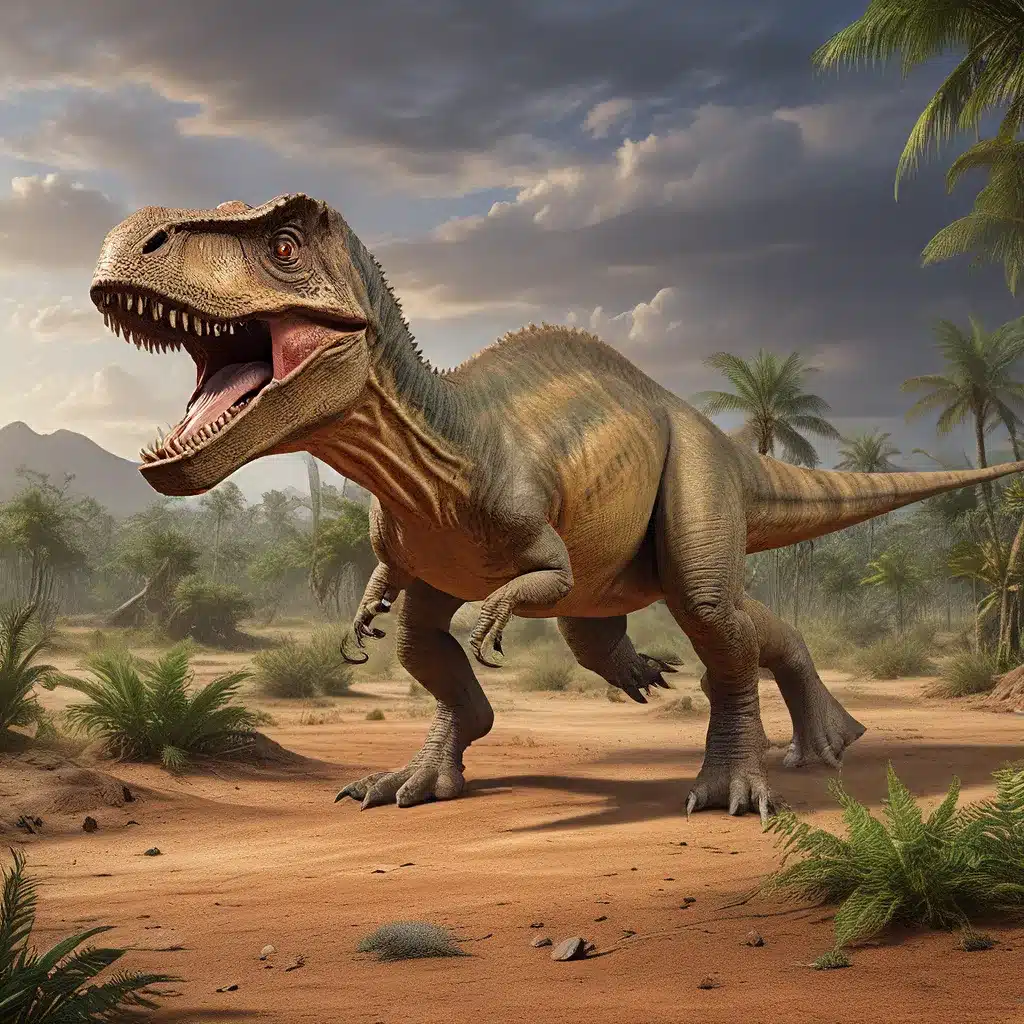
The world of dinosaurs has long captivated our imaginations, conjuring visions of towering beasts roaming a prehistoric landscape. However, recent archaeological discoveries have revealed a far more complex picture of these ancient creatures, shedding light on the diverse cultures and behaviors that thrived millions of years ago.
Grass Diversity in the Late Cretaceous
One such remarkable discovery was made in the fossilized poop of a group of large herbivorous dinosaurs called Titanosaurs. By examining these coprolites, paleontologists have uncovered a surprising diversity of phytoliths – tiny pieces of silica that serve as a defense mechanism in many plants, including grasses.
According to the research, the Titanosaurs’ diet contained at least five distinct grass taxa that we would recognize today, including groups like Oryzoideae (rice and bamboo), Puelioideae, and Pooideae (wheat, barley, oat, and rye). This discovery not only challenges our understanding of grass evolution, but also provides valuable insights into the dietary preferences and ecological roles of these massive herbivores.
“I am always blown away by the details paleontologists are able to extract from such tiny fossils,” remarked one researcher. “Who knew dinosaur poop could tell us so much?”
Grass-Eating Dinosaurs and the Evolving Landscape
The presence of such a diverse array of grasses in the Titanosaurs’ diet suggests that these large herbivorous dinosaurs were able to incorporate these plants into their feeding habits, despite lacking specialized teeth for grass consumption. This finding challenges the prevailing notion that grasses only truly flourished after the extinction of the dinosaurs, as they were previously thought to have played a relatively minor role in these ancient ecosystems.
Furthermore, the diversity of grass taxa identified in the coprolites indicates that grasses had already undergone significant diversification by the late Cretaceous period, setting back the timeline of grass evolution by millions of years. This has implications for our understanding of the broader ecological and biogeographical changes that were occurring during this time, as grasses were likely widespread across the ancient supercontinent of Gondwana long before the breakup of its landmasses.
Uncovering the Hidden Histories of Dinosaur Cultures
The study of dinosaur poop has opened up a new window into the lives and behaviors of these ancient creatures, revealing unexpected insights about their diets, habitats, and even the development of their ecosystems. By examining the contents of these fossilized remains, paleontologists are able to piece together a more detailed and nuanced understanding of the diverse “cultures” that existed among different dinosaur species.
Recent discoveries of new dinosaur species in places like Morocco have further expanded our knowledge of the varied adaptations and behaviors that characterized these ancient creatures. From the unique feeding strategies of different herbivores to the complex social structures of predatory dinosaurs, each new find adds another piece to the puzzle of dinosaur life.
Leveraging Advances in Archaeological Methods
The ability to extract such detailed information from dinosaur poop and other small fossils is a testament to the ongoing advancements in archaeological methods and technologies. Techniques like microscopic analysis of phytoliths and the application of cutting-edge imaging technologies have allowed researchers to uncover a wealth of information that was previously inaccessible.
These methodological breakthroughs have not only enhanced our understanding of dinosaur cultures, but have also opened up new avenues for exploring the histories of other ancient civilizations and their interactions with the natural world. By combining these innovative approaches with a deep respect for the past, archaeologists and paleontologists continue to push the boundaries of our knowledge, revealing the rich tapestry of life that once thrived on our planet.
Preserving the Legacy of Dinosaur Cultures
As we continue to uncover the fascinating details of dinosaur life, it is crucial that we ensure the preservation of these invaluable archaeological resources. Protecting fragile fossil sites and supporting the ongoing research of paleontologists and archaeologists is essential for safeguarding the legacy of these ancient cultures.
The Lost Kingdoms, a leading online resource for all things related to ancient history and archaeology, recognizes the importance of these efforts. By providing a platform for sharing the latest discoveries and insights, we aim to inspire a deeper appreciation for the rich diversity of cultures that have shaped our world, both past and present.
Join us as we continue to uncover the hidden histories of dinosaur life and explore the remarkable connections between these ancient creatures and the world we inhabit today. The story of the dinosaurs is one of resilience, adaptation, and the enduring power of life to thrive in even the most challenging of environments. By embracing this legacy, we can gain a greater understanding of our own place in the grand tapestry of existence.


